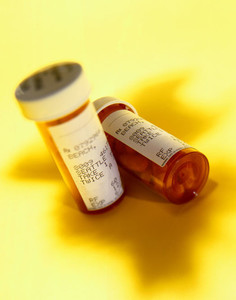Overall sales for Parkinson’s disease drugs in seven major countries will decline slightly from US$2.7 billion in 2010 to US$2.6 billion in 2020 in France, Germany, Italy, Japan, Spain, the UK and US, according to a new report from research and advisory firm Decision Resources. The decline is attributed to key therapies losing patent protection and subsequent generics competition.
Generics will grab Parkinson’s disease market share
Home/Reports
|
Posted 10/11/2011
 0
Post your comment
0
Post your comment

The key Parkinson’s disease therapies reported to lose patent protection by 2020 are Novartis/Orion Pharma’s Comtan/Comtess/Stalevo (carbidopa/levodopa/entacapone) and Teva/Lundbeck’s Azilect/Agilect (rasagiline).
The report also expects GlaxoSmithKline’s Requip (ropinirole) and Boehringer Ingelheim’s Mirapex/Mirapexin/Sifrol/BI-Sifrol (pramipexole) to face increasing generics competition.
Sales in France, Germany, Italy, Japan, Spain, the UK and US will continue to be driven by the leading dopamine agonists, pramipexole and ropinirole, and by increasing use of the monoamine oxidase B (MAO-B) inhibitor Azilect/Agilect (rasagiline), as well as by the re-entry of UCB/Schwarz Pharma's Neupro/Leganto (rotigotine) to the US market and its wider use in Europe.
The report forecasts that despite some key current therapies experiencing increased uptake and the launch of three new agents by 2020, sales of current products and the market impact of emerging therapies will be offset by generic competition.
The three new therapies set to launch by 2020 are Impax Laboratories/GSK’s IPX-066, a reformulation of levodopa, the mainstay of Parkinson’s disease therapy, Merck Serono/Newron Pharmaceuticals’ MAO-B inhibitor safinamide and Kyowa Hakko Kirin’s adenosine A2A receptor inhibitor antagonist istradefylline.
IPX-066, and to a lesser extent safinamide, are expected to contribute moderately to market growth. Both drugs are expected to contend with established agents within the same respective drug classes (where generic alternatives exist) and which are commonly used in the patient populations targeted by the emerging therapies.
While the first-in-class agent istradefylline will benefit from use in the management of motor response complications arising from levodopa treatment, its overall impact will be modest as it is currently expected to launch only in Japan.
The report does not expect major changes in the treatment of Parkinson’s disease over the next 10 years, and generics growth of key Parkinson’s disease therapies is expected to ‘depress market growth’ by 2020. Decision Resources analyst Ms Nadja Rodovsky comments that ‘future therapies will need to clearly demonstrate superiority over current therapies to gain a competitive edge in this mature market’.
Related article
Opportunities in the COPD market
Source: Decision Resources
Guidelines
New guidance for biologicals in Pakistan and Hong Kong’s independent drug regulatory authority
Canada poised to remove requirement for Phase III trials for biosimilars
Policies & Legislation
ANVISA tackles 24-month backlog in biologicals post-registration petitions
US EO: delivering Most-Favored-Nation Prescription Drug Pricing to American patients
Advancing biologicals regulation in Argentina: from registration to global harmonization

Home/Reports Posted 10/10/2025
China-to-West pharma licensing deals surge in 2024 amid innovation push

Home/Reports Posted 22/05/2025
The best selling biotechnology drugs of 2008: the next biosimilars targets








Post your comment